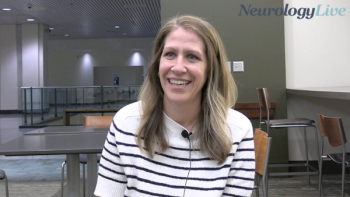
Reimagining Neuroscience Trials: Precision, Partnership, and Progress
Daniel Mikol, MD, PhD, vice president of Neuroscience Development at AbbVie, discussed how precision tools, AI, and patient partnership are reshaping the design and execution of modern neuroscience clinical trials.
Clinical trials in neuroscience are among the most challenging in medicine. This is in part due to the fact that most neurological and psychiatric diseases are complex polygenic disorders exhibiting variable clinical manifestations and heterogeneous clinical courses. For progressive disorders, clinical courses tend to be slowly progressive, which mandates longer term trials to evaluate a potential disease-modifying effect. Moreover, clinical outcome measures can be subjective, insensitive to change, and/or associated with intra-and inter-rater variability. Yet the field is entering a moment of transformation. Daniel Mikol, MD, PhD, Vice President, Neuroscience Development at AbbVie, shares how innovations in trial design, technology, and patient engagement are helping to close the gap between discovery and delivery of novel therapies.
In this exclusive Q&A with NeurologyLive®, Dr. Mikol discusses how advanced tools like artificial intelligence (AI) and digital monitoring are reshaping patient selection and data analysis, why biomarker-based stratification is key to precision medicine in neurology, and how collaboration across the ecosystem can help design trials that are more accessible, patient-centered and efficient, capturing outcomes meaningful to patients and caregivers.
NeurologyLive: For neuroscience clinical trials, what underlies some of the challenges to date?
Daniel Mikol, MD, PhD: Trials in neuropsychiatric diseases present a unique convergence of biological, clinical, and operational complexities. Many CNS disorders involve overlapping and heterogenous pathologies, making it challenging to both define disease boundaries and to identify patients who are most likely to benefit from a given therapeutic approach. Biological variability also affects how symptoms emerge and progress over time, which can render traditional endpoints insensitive to real but subtle, early changes in disease status. Importantly, many traditional endpoints focus on clinical or laboratory measurements, which may not capture changes in daily functioning, emotional well-being, or caregiver burden—factors that patients and their care partners consider very important. This creates a gap between what is measured and what matters in daily life.
Translating insights from preclinical models into the clinic remains another major barrier. Current models rarely reflect actual human disease biology, especially in neurodegenerative disorders, making it difficult to reliably predict clinical efficacy.
Moreover, for progressive neurodegenerative disorders, rates of progression may be highly variable, such that for a given disease, a subset of patients may not progress during the time constraints of a clinical trial. Thus, inclusion of participants who do not progress or progress slowly further complicates efforts to demonstrate meaningful change within traditional clinical trial timelines.
Operationally, patient recruitment and retention continue to challenge the field. Diagnosis can be time intensive, eligibility criteria often narrow, and primary care settings, which may offer a potentially large pool of patients, may have limited resources for specialized neurological screening. Recruitment and retention are therefore frequently slow, especially in diseases that require frequent visits, extended monitoring, or long-term follow-up.
These factors underscore the need for more sensitive, patient-centered endpoints, better predictive biology, and closer collaboration with regulators, clinicians, and patient communities to improve trial design and outcomes.
How can we get more creative with clinical trials to expedite drug development and get treatments into clinical care faster?
The field is moving from traditional, rigid trials to adaptive data-driven models that evolve in real time. Computational tools and AI now allow us to monitor data continuously and optimize recruitment, ensuring that the right patients are enrolled earlier and more efficiently.
Emerging technologies like human-on-a-chip and organoid models are still in the early stages for our field, but they offer potential to model disease mechanisms more accurately and, in the future, bridge the translational gap between preclinical research and clinical trials. In the clinic, biomarker-based stratification enables us to define more homogeneous patient subgroups, improving signal detection and trial efficiency.
At AbbVie, we are harnessing the power of real-world evidence, large observational cohorts, and historical trial data, and integrating these datasets with AI and machine learning to better understand who to treat and when. This integration not only refines trial design and inclusion criteria but may also help us reduce the overall number of patients required for a study. This is particularly important in areas such as Alzheimer’s disease, where recruitment is slow and long-term monitoring is challenging.
By combining approaches, such as biomarkers, AI, and real-world data, we are applying a precision medicine framework to clinical trials in neuroscience. This enables us to design studies that are more efficient, informative, and tailored to patients most likely to benefit.
Are there ways to expand eligibility criteria without jeopardizing the quality of the trial and negatively affecting its outcomes?
It is generally considered that expanding the eligible study population will introduce risk, but broader eligibility does not have to mean lower rigor—it requires smarter precision.
When possible, biomarker-driven stratification allows us to include a wider and more diverse population while maintaining scientific clarity. By tailoring inclusion criteria around biological or digital markers rather than broad demographic exclusions, we can preserve data integrity while reflecting real world patient diversity.
Flexibility in study design also helps. Remote assessments, digital endpoints, and decentralized site models reduce patient burden and make participation more feasible, particularly for those with mobility or caregiving challenges. These personalized and pragmatic approaches enhance trial relevance and applicability while maintaining scientific rigor.
How can the clinical and patient communities collaborate better to improve trial designs? Is there currently a disconnect between the two?
The best designed trials start with patient partnership. Historically, clinical development has been shaped primarily by scientific and regulatory priorities, but in more recent years we have learned that to achieve meaningful progress, we must address and incorporate the patient perspective early, from protocol design to endpoint selection.
When we actively involve patients, caregivers and advocacy organizations, we gain insights that directly influence trial feasibility and relevance. Incorporating relevant patient-reported outcomes and designing clear, accessible educational materials fosters trust and transparency. These collaborations ensure our endpoints measure what truly matters: symptom relief and improved function and quality of life, not just changes in clinical metrics.
By aligning scientific priorities with patient experience, we can design studies that are more feasible, engaging and impactful, and ultimately deliver therapies that address what patients value most.
How do we as a clinical community trend toward more objective vs subjective endpoints/outcomes?
We are at an inflection point where technology and biology can work together to redefine how we measure success. The integration of biomarkers, imaging, and digital monitoring provides a more objective and continuous view of disease evolution as well as treatment response. When combined with standard but less objective clinical assessments, these tools may enable endpoints that are both sensitive and specific, detecting meaningful change earlier and more reliably.
Equally important is regulatory alignment. We must continue partnering with health authorities to validate and adopt these objective measures as accepted endpoints in pivotal studies. Doing so will not only enhance scientific rigor but also ensure that data resonate with payers and patients alike.
The future of neuroscience trials will blend objective and subjective insight, marrying the measurable with the meaningful, to deliver therapies that make a tangible difference in patients’ lives.
Newsletter
Keep your finger on the pulse of neurology—subscribe to NeurologyLive for expert interviews, new data, and breakthrough treatment updates.



































